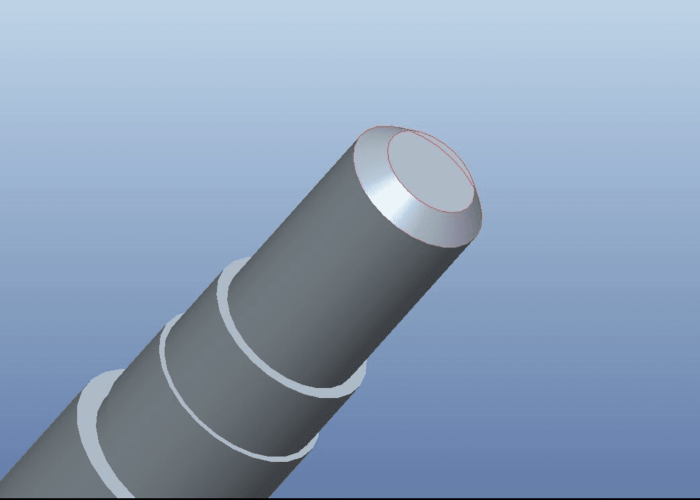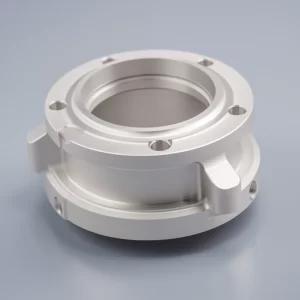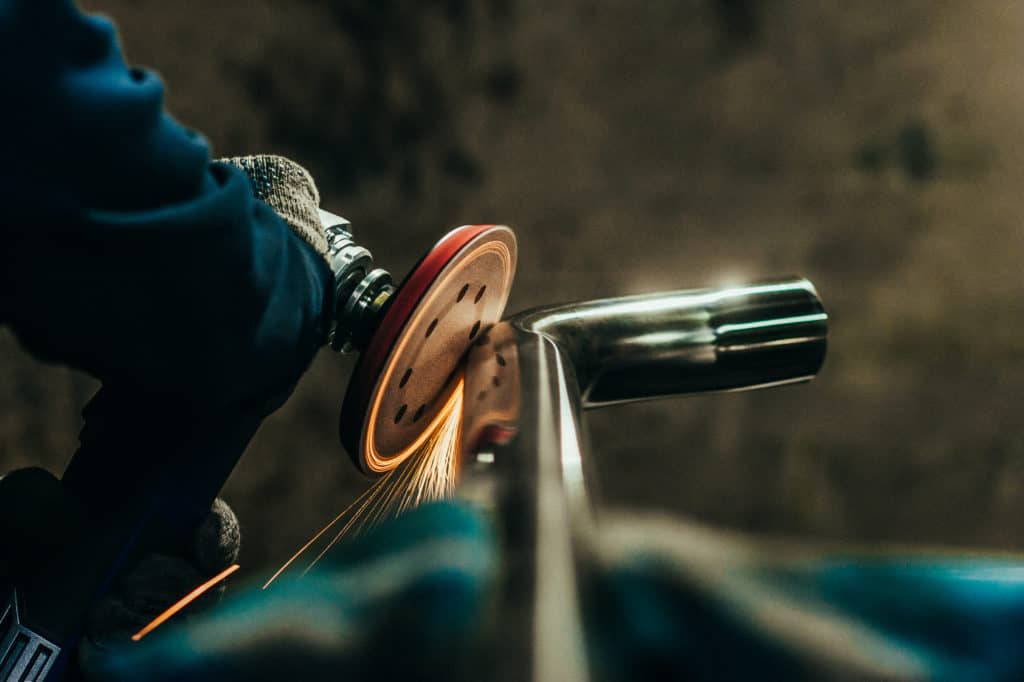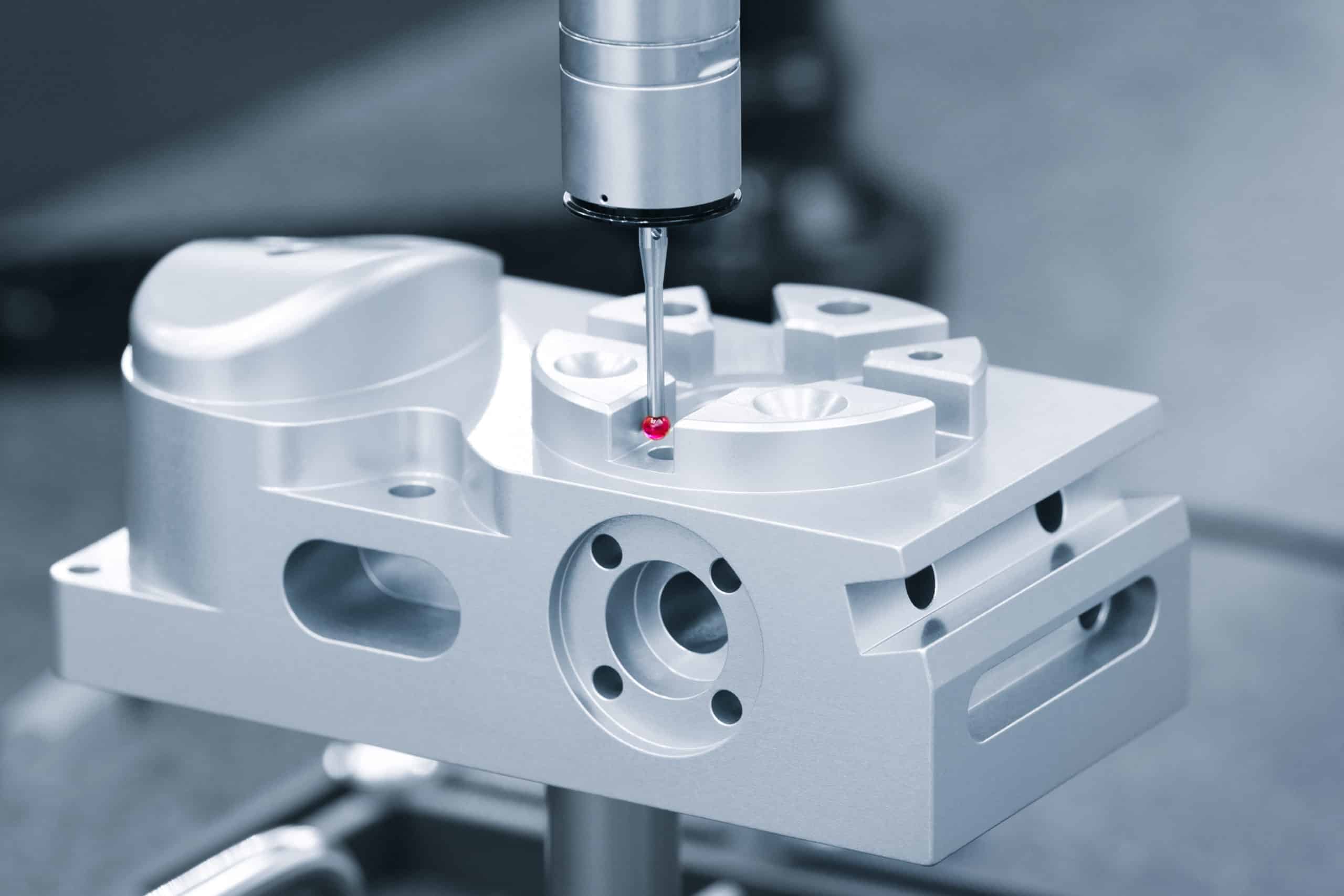Product developers often struggle with chamfer specifications—wondering when they’re necessary, what angles to use, and how sizing affects both part performance and manufacturing cost. With over 15 years machining precision aluminum components for aerospace, audio, and medical applications, we’ve seen how small chamfer decisions can dramatically impact assembly success, part durability, and production budgets.
45° chamfers are the standard choice for CNC aluminum parts, offering optimal balance of safety, assembly ease, and machining efficiency. Typical sizes range from 0.5mm to 2mm depending on material thickness, with alternative angles available for specific functional requirements.
This post addresses the most common chamfer questions we receive from engineers during design reviews.
Table of Contents
When Are Chamfers Required vs Optional in Product Design?
Chamfers are required for threaded holes, user-accessible edges, and assembly interfaces where parts must guide together smoothly. They’re optional for internal structural features and hidden surfaces that don’t affect function or safety.
We machine thousands of aluminum parts annually, and the pattern is consistent: threaded holes M3 and larger always need 0.2-0.5mm chamfers to prevent fastener cross-threading and ensure proper seating. Without them, assembly teams struggle with misaligned screws that damage threads or create loose joints. Edge chamfers become mandatory on any surface users will contact – even a 0.5mm chamfer eliminates the sharp corners that cause cuts during installation.
Assembly interfaces tell a different story. When mating parts have tight clearances under 0.2mm, chamfers act as alignment guides that eliminate binding during insertion. We’ve measured this reducing assembly force by 40-60% compared to sharp-edged alternatives. Parts with properly chamfered mating surfaces maintain their fit tolerances better over repeated assembly cycles, which becomes critical in housings that get opened for maintenance.
The costly mistake happens when engineers chamfer every edge on a drawing by default. Internal features that never contact other parts or users don’t need edge treatment – it just adds tool changes and cycle time without improving the product. Smart engineers specify chamfers only where they solve actual assembly or safety problems.
Design Takeaway: Reserve chamfers for functional needs – threaded fasteners, user contact points, and tight assembly fits. Skip them on internal structures where they add cost without solving actual problems.
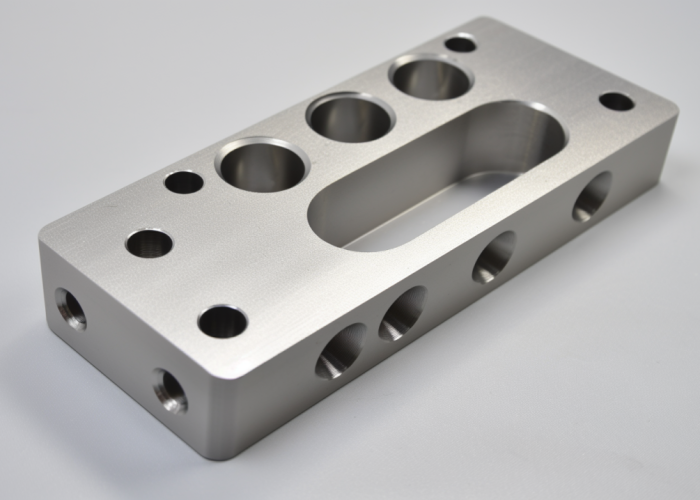
What's the Difference Between 30°, 45°, and 60° Chamfers for Aluminum?
45° chamfers are the machining standard for aluminum parts, offering the best balance of tool life, surface finish, and assembly function. 30° chamfers work better for thin walls, while 60° chamfers suit heavy-duty applications requiring maximum material removal.
Most aluminum chamfers use 45° angles because they match standard tooling geometry and create efficient chip evacuation. We achieve consistent Ra 1.6 μm surface finishes at this angle, and fasteners seat naturally without the binding issues that occur with steeper geometries. The cutting forces stay balanced, which means longer tool life and better dimensional control.
Different angles solve specific engineering problems:
- 30° chamfers preserve more base material in thin sections under 2mm thickness, though they require slower machining to prevent tool deflection and chatter
- 45° chamfers work for most applications with predictable machining behavior and reliable assembly performance – the standard choice for housings and brackets
- 60° chamfers remove substantial material for large fastener clearance but generate higher cutting forces that require more rigid setups and affect tolerance capability
Tool selection drives these practical limits. Standard chamfer mills come in 45° geometry because it balances cutting efficiency with tool strength. Shallower angles can cause tool deflection in deeper cuts, while steeper angles generate more heat that affects aluminum’s dimensional stability during machining.
Design Takeaway: Start with 45° chamfers for most aluminum applications – they machine predictably and function reliably. Choose 30° for thin sections where material preservation matters, or 60° when you need substantial edge removal for large fastener clearance.
What Size Chamfer Do I Need for Different Aluminum Thickness?
Chamfer size should typically range from 10-25% of material thickness for aluminum parts. Use 0.5mm chamfers for 2-3mm thickness, 1mm for 4-6mm thickness, and scale proportionally while considering functional requirements.
Material thickness directly affects how large a chamfer you can machine while maintaining part integrity. Too small and you don’t break the edge effectively; too large and you weaken the structure unnecessarily. We’ve found these proportions work reliably across different aluminum applications:
Practical Sizing Guidelines:
- 1-2mm thickness: 0.2-0.5mm chamfers (preserve structural integrity in thin walls)
- 3-4mm thickness: 0.5-1.0mm chamfers (standard proportional sizing)
- 5-8mm thickness: 1.0-1.5mm chamfers (accommodate larger fasteners)
- 8mm+ thickness: 1.5-2.5mm chamfers (heavy-duty applications)
Thread requirements sometimes override these proportions. Fastener holes need specific chamfer depths for proper seating – typically 0.2-0.3mm for M3 screws up to 0.8mm for M8 bolts, regardless of wall thickness. Assembly interfaces may also need larger chamfers for smooth part insertion, even on thinner materials.
Machining considerations matter too. Very small chamfers under 0.3mm often require multiple light passes and precise tool control, while oversized chamfers waste material and cycle time without improving function.
Design Takeaway: Use material thickness as your sizing starting point, then adjust for functional needs like fastener seating or assembly clearances. This approach balances effective edge breaking with structural preservation.
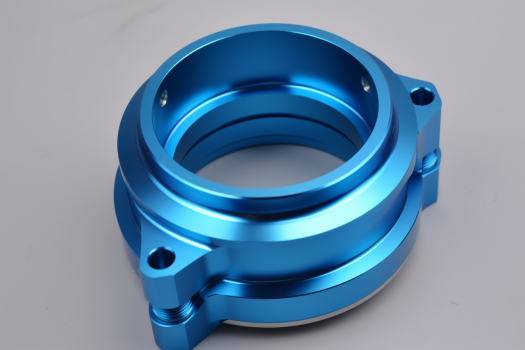
Do Chamfers Weaken Aluminum Parts?
Small chamfers typically improve aluminum part strength by eliminating stress-concentrating sharp corners. Large chamfers can reduce strength by removing too much load-bearing material – the key is finding the right balance.
Sharp corners create stress concentration points where cracks often start under repeated loading. A properly sized chamfer spreads stress more gradually across the transition, which actually improves fatigue resistance in most aluminum applications. This benefit is especially noticeable in harder alloys like 7075-T6 where sharp corners amplify stress concentrations more severely.
The strength improvement disappears when chamfers remove too much cross-sectional area. The transition point varies by material and loading, but generally occurs around 20-25% of wall thickness. Beyond this, the material removal outweighs any stress distribution benefits.
Material grade affects this relationship. Softer 6061-T6 aluminum tolerates larger chamfers better than harder, more brittle grades. Load direction also matters – chamfers on edges perpendicular to primary stress have less structural impact than those parallel to the main loading direction.
For critical applications, the geometry needs verification through stress analysis. Simple hand calculations work for basic loading, while complex parts benefit from finite element analysis to understand how chamfer size affects overall strength.
Design Takeaway: Keep chamfers under 20% of wall thickness for structural applications, focusing them on stress-critical corners where crack initiation is likely. For non-structural edges, size them based on assembly and safety requirements rather than strength concerns.
How Does Chamfer Angle Affect CNC Machining Cost?
45° chamfers cost least to machine due to standard tooling and single-pass capability. 30° and 60° angles require specialized tools or multiple passes, increasing cost by 20-40% depending on part complexity and batch size.
Standard chamfer mills come in 45° geometry, which eliminates special tooling costs and lead times. Most 45° chamfers machine in a single pass at full feed rates, keeping cycle times minimal while achieving ±0.1mm tolerance easily. Tool life stays predictable because cutting forces remain balanced.
Cost impacts vary significantly by angle and quantity:
Chamfer Angle Tool Cost Impact Cycle Time Impact Tool Life Best Applications
30° +25–40% (custom tooling) +30% (slower feeds) Standard Thin walls <2mm
45° Standard Baseline Longest General purpose
60° +15–25% (shorter life) +10–20% (more material) ~60% of standard Heavy-duty, large fasteners
Batch size amplifies these differences dramatically. For prototypes under 10 pieces, setup time dominates regardless of angle. But production runs over 50 pieces show clear cost separation – jobs requiring 60° chamfers need tool changes twice as often, while 30° angles require slower programming and feed rates that extend cycle time.
Programming complexity also scales with angle deviation from standard. Custom angles need sophisticated CAM work and additional setup verification, adding 1-2 hours to job setup compared to straightforward 45° tool paths.
Design Takeaway: Specify 45° chamfers whenever functionally acceptable to minimize machining cost and lead time. Reserve custom angles for applications where the functional benefit clearly justifies 20-40% higher machining costs.
How Do I Specify Chamfers on Technical Drawings for CNC?
Use standard chamfer callouts like “0.5 x 45°” or “C0.5” for equal-leg chamfers. Include GD&T position tolerances for critical assembly features, and specify surface finish requirements when chamfer quality affects function or appearance.
Clear drawing callouts prevent machining confusion and costly revisions. Standard notation follows ISO 13715 guidelines and ensures consistent interpretation across different machine shops. The format directly communicates both size and angle requirements without ambiguity.
Standard Chamfer Callout Formats:
- Equal chamfers: “C0.5” (shorthand for 0.5 x 45°) or “0.5 x 45°” (explicit format)
- Unequal chamfers: “0.5 x 1.0” (specifies both leg dimensions clearly)
- Variable angles: “1.0 x 30°” (size x angle when not 45°)
- General edge break: “Break all sharp edges 0.1-0.3” (safety requirement without over-specification)
Tolerance and Quality Specifications:
- Position tolerances: Apply GD&T position callouts (⌖0.1 A|B) for assembly-critical chamfers
- Surface finish: Specify Ra values only when needed – Ra 1.6 μm for visible edges, Ra 3.2 μm acceptable for hidden features
- Dimensional tolerance: Use ±0.1mm standard unless assembly requires ±0.05mm precision
Thread relief chamfers need depth control to prevent cutting into functional threads. Specify depth tolerance relative to thread start, typically 0.2-0.3mm for M3 fasteners scaling to 0.8mm for M8 bolts per ASME B18.2.1 requirements.
Design Takeaway: Use standard ISO notation for chamfer callouts, add tolerances only where assembly function requires them, and specify surface finish for visible or friction-critical edges. General edge break notes handle safety requirements without over-constraining manufacturing.
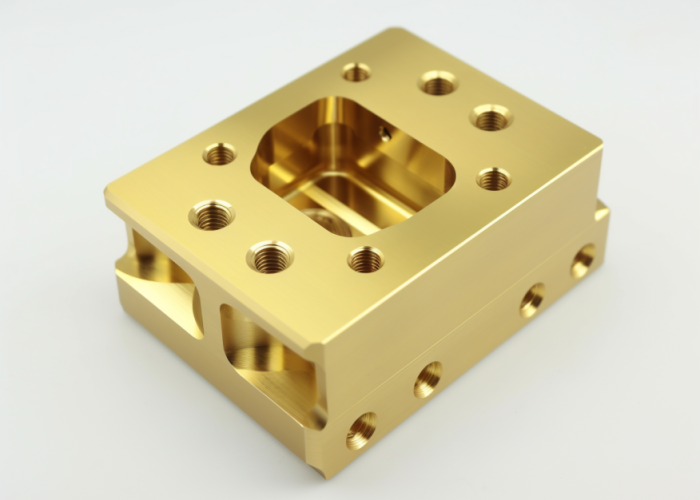
What Chamfer Problems Should I Avoid in Aluminum Design?
Avoid over-specifying tight tolerances on non-critical chamfers, chamfering every edge unnecessarily, and ignoring tool access limitations in deep pockets or complex geometries. These mistakes can increase machining cost by 50-100%.
The most expensive mistake is chamfering every edge by default. Internal structural features that remain hidden during product use don’t need edge treatment – this adds unnecessary tool changes and cycle time. We regularly see drawings with 20+ chamfer callouts where 5-8 would accomplish all functional requirements.
Tool access creates manufacturing constraints that CAD software doesn’t reveal. Deep pockets with narrow openings prevent standard chamfer tools from reaching all edges. Complex geometries may require special tooling, additional setups, or hand finishing that can triple machining time. Always verify that standard tools can physically reach each specified chamfer location.
Tolerance over-specification destroys cost efficiency. Chamfers called out as “0.5 ±0.02 x 45° ±0.5°” require CMM inspection and documentation that adds significant cost. Most chamfers function perfectly with standard machining tolerance of ±0.1mm unless specific assembly clearances demand tighter control.
Material grain direction affects chamfer quality in aluminum extrusions and rolled sheet. Chamfers cutting across grain direction can cause edge tearing and poor surface finish, while chamfers following material flow direction machine cleanly. This becomes critical for visible edges requiring smooth appearance.
Design Takeaway: Chamfer only functional edges, verify tool accessibility during design review, and use standard ±0.1mm tolerance unless assembly specifically requires tighter control. Consider aluminum grain direction and manufacturing constraints to avoid costly production surprises and rework.
Conclusion
45° chamfers at 15-20% of wall thickness provide optimal balance of safety, assembly function, and machining efficiency for most aluminum applications. Consider material thickness, tool access, and functional requirements when specifying alternatives. Avoid over-chamfering internal features that don’t affect assembly or user safety. Contact us to explore manufacturing solutions tailored to your chamfer requirements.
Frequently Asked Questions
Only if they’re threaded or affect assembly. Plain through-holes for bolts don’t need chamfers unless the fastener head requires a smooth seating surface. Skip chamfers on hidden structural holes to reduce cost.
0.2mm is practical minimum for consistent quality. Smaller chamfers require multiple light passes and precise tool control, increasing cost without significant functional benefit. Consider 0.3-0.5mm for better manufacturability.
Standard 45° chamfers add 5-15% to cycle time depending on part complexity. Custom angles or tight tolerances can add 25-40% due to slower feeds, tool changes, and additional inspection requirements.
Yes, keep chamfers under 20% of wall thickness. For 2mm aluminum, use 0.2-0.4mm chamfers maximum. Larger chamfers in thin sections can create stress concentrations and reduce structural performance.
Only if functionally necessary. Single-side chamfers handle most safety and assembly requirements. Double-sided chamfers require flipping the part, adding setup time and potential positioning errors that affect cost and quality.
±0.1mm works for most applications and keeps costs reasonable. Only specify ±0.05mm for assembly-critical chamfers where precise fit is required. Tighter tolerances require CMM inspection and increase machining cost significantly.
